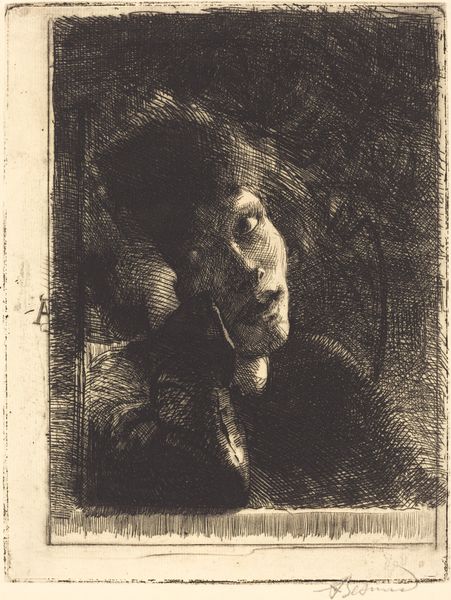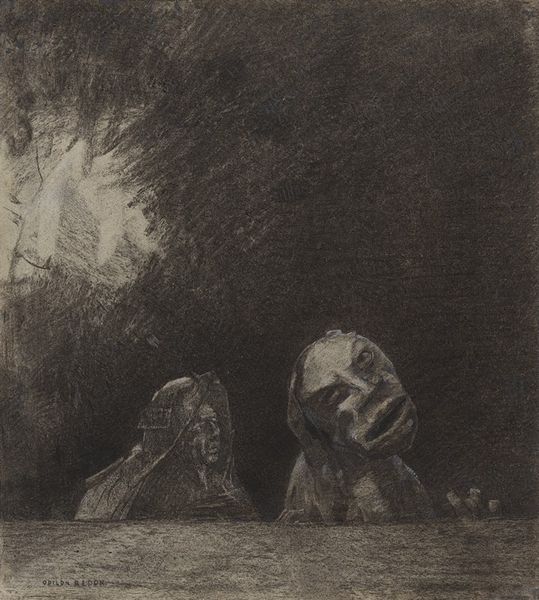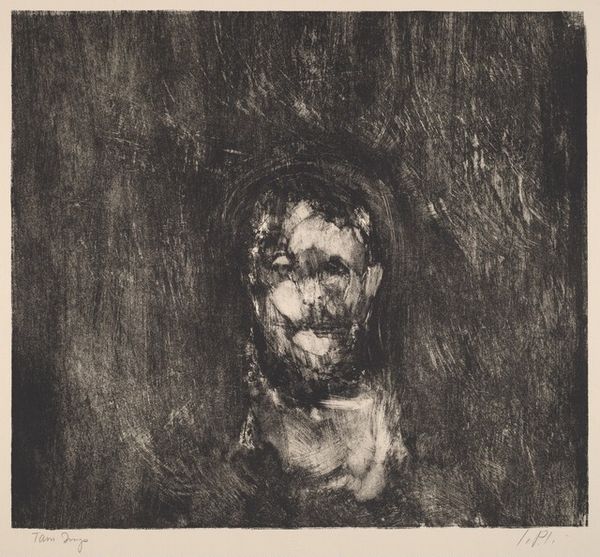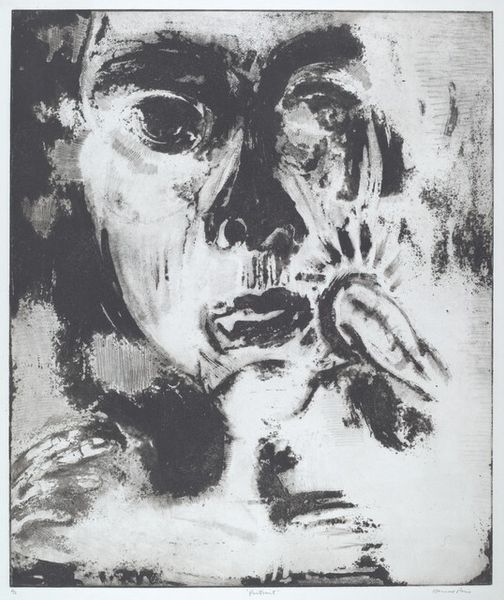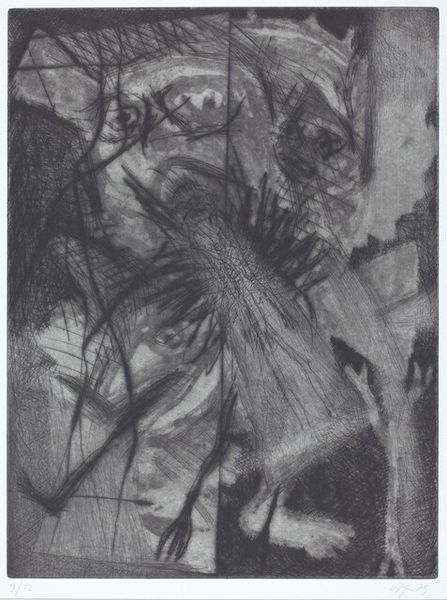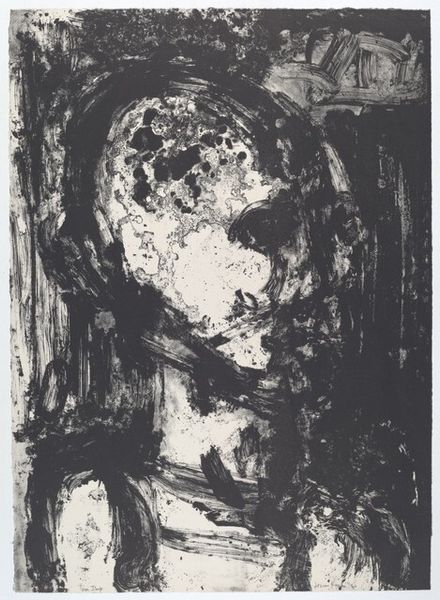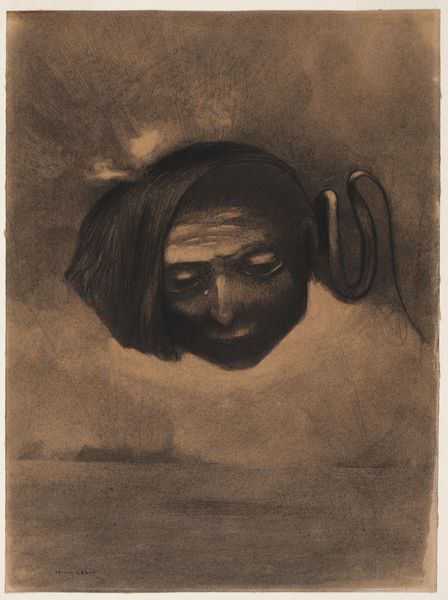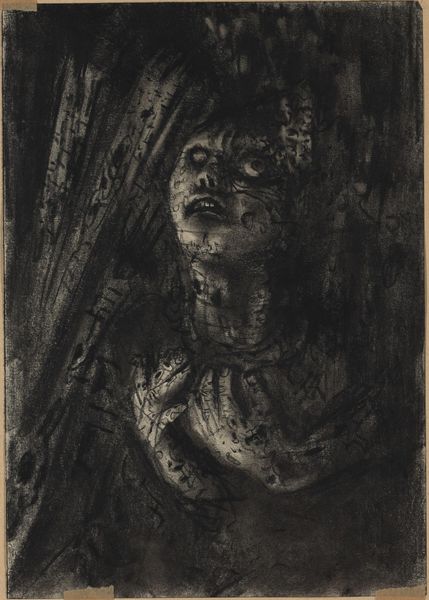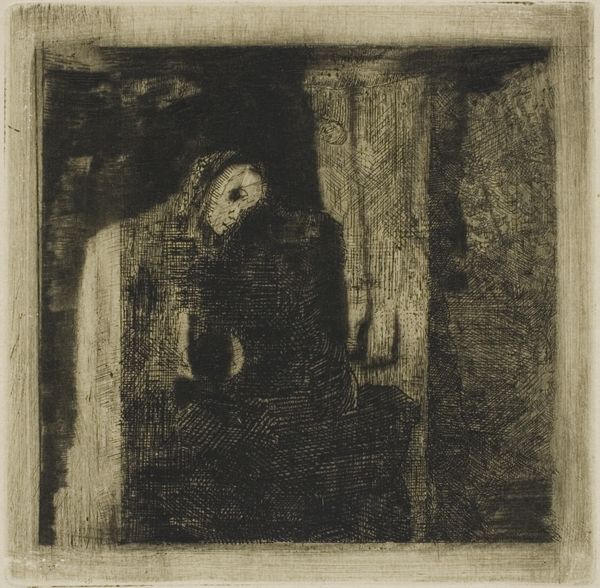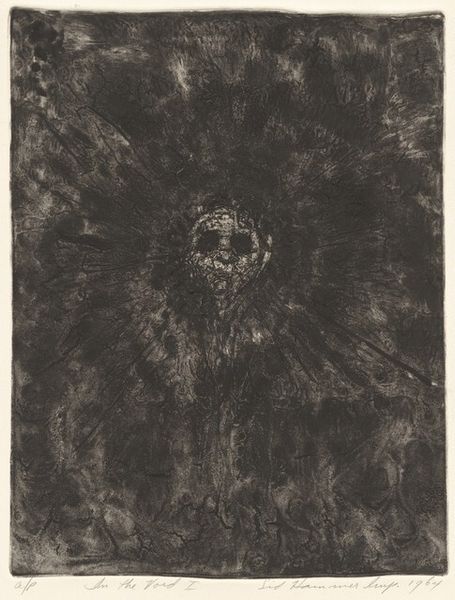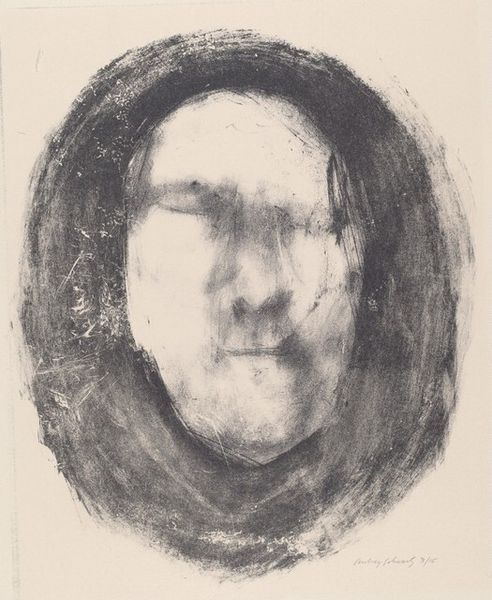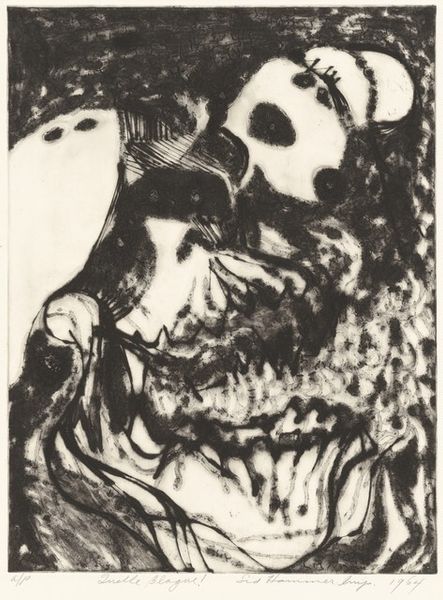
Copyright: Public Domain: Artvee
Curator: Redon's "Tears," created in 1878, gives us a profound insight into his early style through the Romantic lens, with definite symbolic undertones. The work is rendered with charcoal, one of his favorite mediums to conjure shadow worlds. Editor: Shadow worlds is right! It’s melancholic, almost oppressively so. The scale feels vast, even though it’s a drawing, like this monumental sadness looming over a dark sea. Is that water down below, or something else? Curator: Indeed. It is a charcoal drawing and yes, it’s water depicted at the lower portion. It contributes to a pervasive feeling of sorrow, or even defeat, especially given that central figure's cast-down gaze. Note the delicate hatching that gives form to the wavelets, contrasting with the almost aggressively smudged darkness that defines the head. The composition directs our attention to the eyes. Editor: Those closed eyes! There’s such a strange dichotomy at play. We can't see them, and yet, everything feels intensely, almost painfully, personal. I can almost feel the dampness of tears, heavy, fat tears that trace a path across his features, despite his eyes remaining firmly closed. Tell me about the wings, or rather, that singular wing tucked above his ear. Curator: That placement of the wing... that's what gives this piece its ethereal quality. It hints at transcendence, an attempt at escape perhaps, weighed down by earthly emotion. Perhaps he weeps from the inability to transcend those burdens of existence. And that singular wing can represent the failed dreams of men weighed down by mortal affairs. Editor: Yes! Absolutely. Failed ascension… I also see it as potential. The fact that it is only a wing alludes that it isn’t too late to fly. I still find the figure intensely sympathetic; perhaps what haunts him can also set him free. Curator: A compelling alternative reading, viewing it from the perspective of optimism that does open up Redon's world! Regardless of how one chooses to interpret it, "Tears" invites us to delve into the heart of our own emotional landscape. Editor: Definitely, “Tears" makes us look into the mirror and question ourselves on whether we have flown far enough, or just let ourselves be weighed down.
Comments
No comments
Be the first to comment and join the conversation on the ultimate creative platform.
